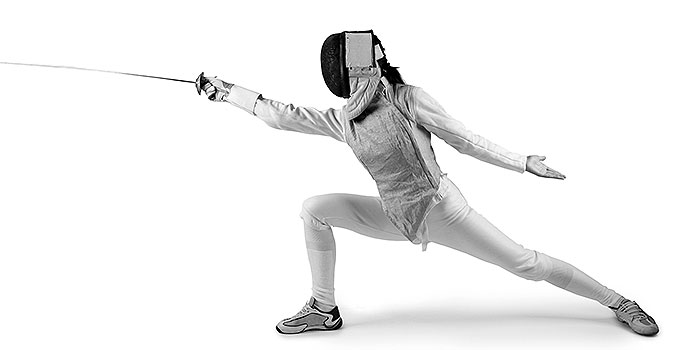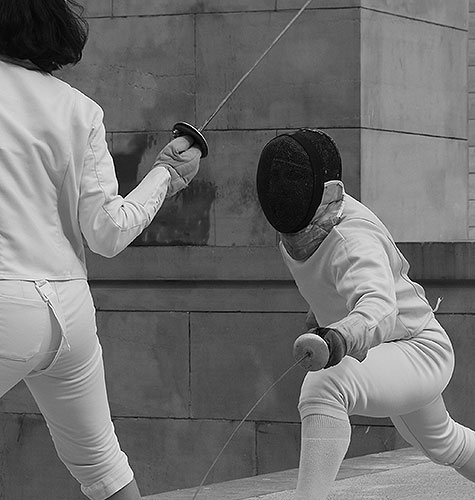



History Of Fencing
- ArticlesandContent.com (CIRCA 2005)
- /
- Oct 8, 2021 (written 2005)
The history of fencing can be traced back to its native country of France. Some historians assert that the art of fencing is rooted in ancient civilization found in Rome and Egypt. Later, this sport would prove so popular that it would become part of the Olympic games in 1896; it remains a part of the Olympic events today.
Fencing is a sport that involves the use of bladed weapons; the art of fencing can involve the use of one of three different weapons including the foil, the saber, and the Épée.
Its Origins
Fencing has long been revered as an art form as well as a sport; the act of fencing is believed to be symbolic of glory, victory, and power. The art of this sport is derived from warfare preparation and the preparation that men would engage in before duels; there are Egyptian carvings that date back as far as 1200 BCE. The craving illustrates a fencing match where the participants donned on masks and utilized weapons that had protective devices on their tips to prevent injury. It also illustrates judges that were observing the fencing participants.
Fencing was performed by a number of ancient cultures including the Romans, the Greeks, the Persians, and the Babylonians too. Romans as well as Greeks educated their warriors in ludis or special schools on the art of using swords and fencing with light spears. Fencing proved popular until the fall of Rome in 476 CE. After that time, the sport was less popular until the fourteenth century and the arrival of the Renaissance.
Upon the arrival of the Middle Ages, the development of body armor literally made the use of swords obsolete when it came to warfare. During this time, the rapier became a weapon of choice once again. When firearms were created, the use of body armor fell to the wayside and this opened the door once again to those interested in sword fighting and swordsmanship. During the fifteenth century, fencing became a popular pastime among the elite. There were guilds that were organized by “fencing masters,” and gentlemen were educated in the fine art of fencing.
Evolution of Fencing
The fifteenth century proved the true beginning for what is now known as modern fencing. The first modern fencers heralded from Spain. Fencing guides were released by various publishers in the early 1470s. Around the same time, the birth of numerous guilds was witnessed all over Europe. The Marxburder Guild was formed in Germany and in the 1500s, the rapier increased in popularity in regions of Italy. At this time, a number of fencing masters from Italy came up with different fencing maneuvers; Agrippa of Rome invented a total of four positions for the sport including the quarte, tierce, seconde, and the prime. Additional fencing masters like Vigiani and Grassi also helped create maneuvers like the lunge. Later, during the sixteenth century the practice of fencing became a popular form of dueling, so much so that many men died while sword fighting or dueling.
In France, the art of fencing was further promoted by Queen Catherine de Médici; she requested that fencing masters come to France in order to help develop the sport in the country. By the late 1560s, King Charles IX, the son of Queen Catherine de Médici, formally recognized the first academy for Fencing in the country. By the early 1970s, a fencing master of France, Henry de St. Didier, authored a treatise encouraging the use of the Épeé rather than the then preferred rapier.
It wasn’t until the seventeenth century that the foil or the fleuret was created for the purposes of fencing. Regulations regarding fencing made the sport far safer than before; rules like right-of-way helped to significantly reduce the dangers of being impaled while fencing. In addition, in France, during the reign of King Louis XIV, a shorter sword was called for since the king made various fashion changes that included the use of silk stockings, breeches, and brocaded jackets; a longer sword did not seemingly work well with the latter fashion attire so a demand for a shorter sward was called for. The call for a short sword resulted in the creation of the court sword: a strong, light weapon more appealing than the rapier. The creation of this particular weapon lead to the modern day one handed techniques used in fencing. Even later, the court sword would prove the predecessor to the foil. While the foil was used for practice, the colichemarde was created for the sole purpose of dueling matches. Eventually, the colichemarde would prove the predecessor of the Épeé.
In the eighteenth century, the saber was created in Europe. This weapon was preceded by the scimitar, a Turkish weapon utilized by the cavalry in Hungary. This weapon proved heavy and the blade was curved. Later, a far lighter weapon was developed in nineteenth century Italy: this type of saber sported a blade that was only slightly bent and that proved ideal for fencing and dueling. Today’s fencing weapons, like the Épeé or the saber, are quite straight, but still sport an edge that is used for cutting or to hit the fencing opponent.
The mask that modern fencers wear was not created until 1780; Master La Boessiere created the mask to improve the safety level of fencing practices. The art of fencing made its way to America through Italian and French immigrants in the late 1860s and early 1870s. By the year 1874, the first school for fencing was established. American colonists also took part in fencing, particularly in Virginia where the sport of fencing was engaged in by owners of plantations and those that desired to carry on the gentleman traditions of the British homeland. What is truly understood as modern fencing was brought to the United States in the 1840s by German Turners. Following the Civil War, fencing became a sport that proved popular in a variety of clubs and colleges.